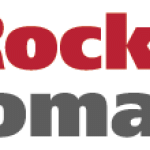- Branża: Automation
- Number of terms: 8432
- Number of blossaries: 0
- Company Profile:
Rockwell Automation, Inc. provides industrial automation power, control, and information solutions.
A binary numbering system that is coded such that sequential numbers are represented by expressions that differ in only one bit, to minimize errors that could otherwise occur during transitions in a natural binary system.
Industry:Automation
A single path or multiple parallel paths for power or data signals to which several devices may be connected at the same time. A bus may have several sources of supply and/or several sources of demand.
Industry:Automation
The 3rd layer of the ISO open-system-interconnect reference model. It provides routing and relaying services associated with all of the layers of that station and is responsible for setting and resetting control parameters and obtaining reports of error conditions.
Industry:Automation
1) A rung-output instruction that sets the state of the output only when the rung is true. Whenever the rung is not true, it does not control the state of the output. 2) Contrasted with a non-retentive output instruction that continuously controls the state of the output
Industry:Automation
A photoelectric control that contains the light source, receiver, power supply, and all electronics in the same housing.
Industry:Automation
For a given network, all variables such as messages and stations are held constant for modeling and simulation purposes.
Industry:Automation
The way a network is physically structured. Example: a ring, bus, or star configuration.
Industry:Automation
A binary value with its bits set to a pattern to selectively screen out or let through certain bits in a data value to specify which of those bits are to be operated on in generating a masking result value.
Industry:Automation
A slow change in some characteristic of a device. For a drive, it is the deviation from the initial set speed with no load change over a specific time period. Normally the drive must be operated for a specified warm-up duration at a specified ambient temperature before drift specifications apply. Drift is normally caused by random changes in operating characteristics of various control components.
Industry:Automation
